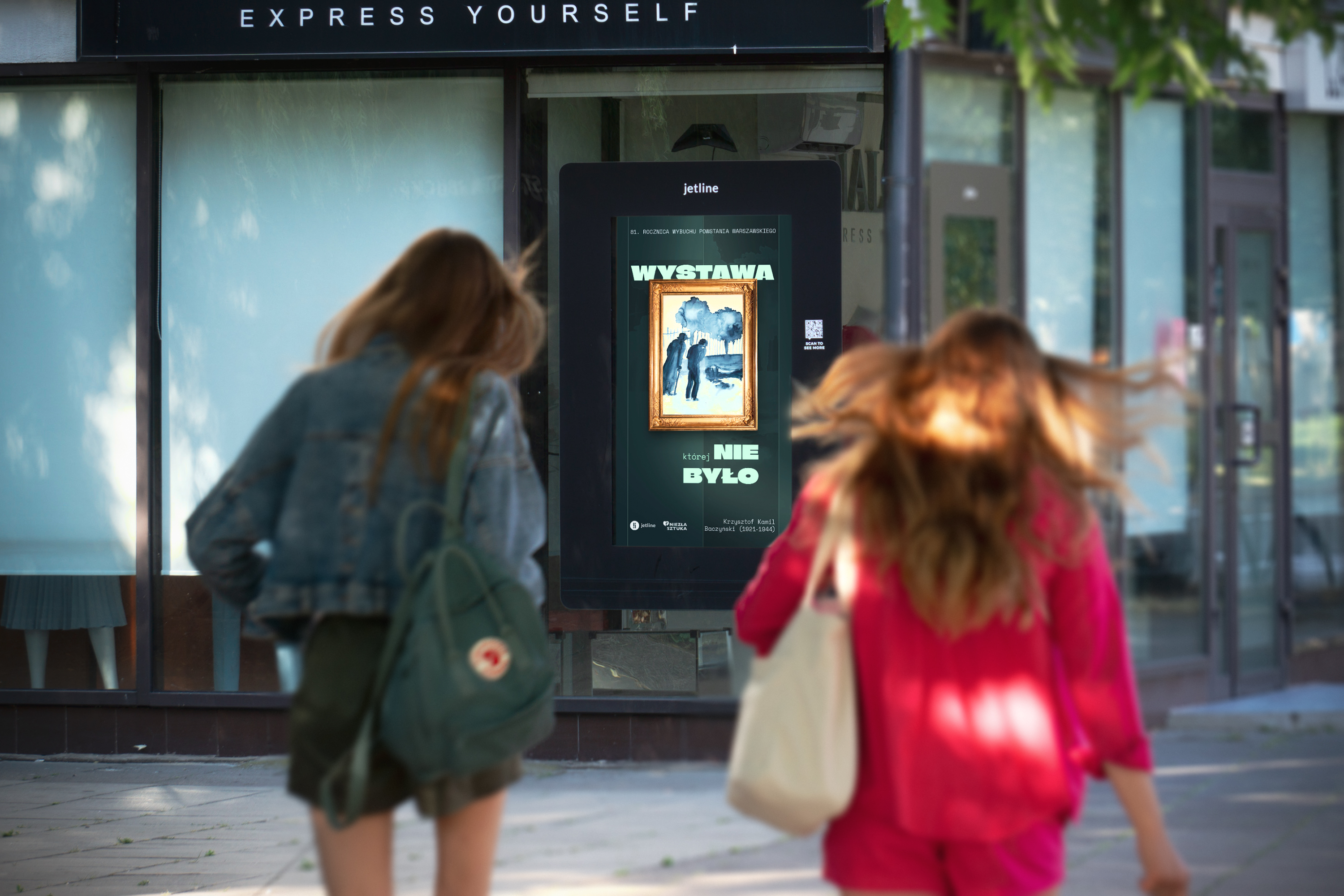On MORE Screens: the Exhibition that Wasn't
We specialize in outdoor advertising, communication, and public space engagement. We operate both outside and within the city; this is our natural environment. Naturally, Warsaw, where we live and work, is especially dear to us. Nothing here is insignificant.
For years, we have in some way marked the significance of August 1st and the entire period during which the Warsaw Uprising lasted. Since we've had Digital OOH screens, with the knowledge of our clients and partners, we stop all spots for an hour to focus attention on the atmosphere and broadcast a commemorative 'W-Hour' screen. After that, we broadcast specially prepared spots, for the city then and now, for the people of that era and today.
Baczyński - the Poet, Baczyński - the Draftsman
Julia Leszczyńska from the Niezła Sztuka portal proposed Krzysztof Kamil Baczyński as the subject of this year's screen campaign. We embraced this idea: Baczyński - the poet is well-known. Baczyński - the draftsman and visual artist less so. And DOOH screens are, after all, a visual medium. We thought that showing some of his works, drawings, and graphics would reveal something new about Baczyński.
And then Martyna said: Baczyński probably never had an exhibition.
Krzysztof Kamil Baczyński passed his high school final exams in May 1939. He wanted to be an illustrator or graphic artist, but instead of studying at the Academy of Fine Arts, he went to war. On August 4, 1944, he died in the Blanka Palace near Teatralny Square. For a year, he studied Polish philology at the underground University of Warsaw, but he interrupted his studies to join the conspiracy. Baczyński's works survived in manuscripts. His poems, poetic works, drawings, and graphics have been preserved. They are available in the public domain on Polona (www.polona.pl)
Actually, we don't know for sure if Baczyński never had an exhibition. We haven't thoroughly traced his biography from this perspective, assuming he was too young, too little known and experienced, and too preoccupied with himself and the war to think about an exhibition of his artistic works. We don't even know if he would have wanted one. We assume so – that every artist matures to this point at some stage.
However, we know for sure that he never had an exhibition on screens.
“the Exhibition that Wasn't” is a Symbol
“The exhibition that wasn't” is a symbol. It is a profound tribute to those individuals for whom the war made it impossible to realize their plans, erased their dreams, shattered their goals, and took their lives.
I am writing this at the end of July. And I think about Warsaw and its inhabitants from 81 years ago, sitting desk-to-desk with our photographer Olga, who has lived in Warsaw for three years, not in her native Ukrainian Bucha. And I think about the people in Gaza.
How many exhibitions will there never be?

